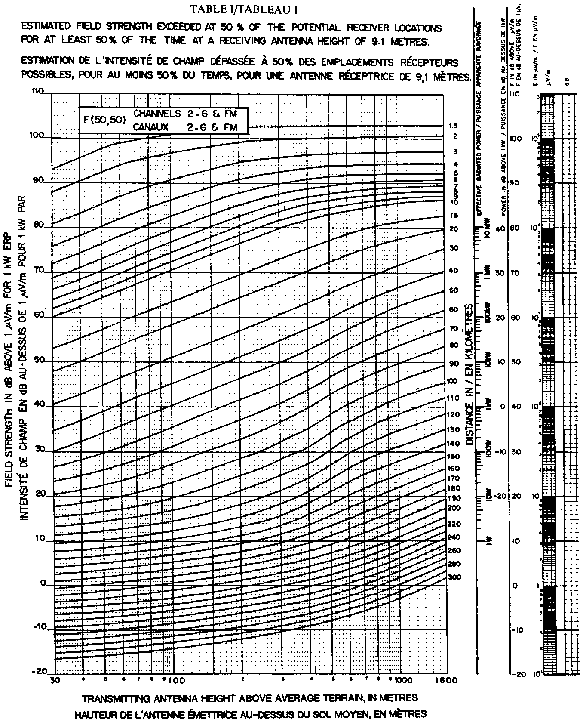Definition of Local Signal and Distant Signal Regulations (SOR/89-254)
Full Document:
- HTMLFull Document: Definition of Local Signal and Distant Signal Regulations (Accessibility Buttons available) |
- XMLFull Document: Definition of Local Signal and Distant Signal Regulations [13 KB] |
- PDFFull Document: Definition of Local Signal and Distant Signal Regulations [441 KB]
Regulations are current to 2024-11-26 and last amended on 2014-04-23. Previous Versions
SCHEDULE(Section 1)Method for Determining the Predicted 0.5 Millivolt Per Metre (mV/m) Contour of Terrestrial F.M. Radio Stations and the Predicted Grade B Contour of Terrestrial Television Stations
Height of Antenna Above Average Terrain (Haat)
1 The height of an antenna above average terrain shall be determined on a topographical map by
(a) marking the transmitting site on the map, using the geographical coordinates of the site;
(b) drawing two concentric circles with radii of 3 km and 16 km, respectively, from the transmitting site marked under paragraph (a);
(c) starting at true north, drawing eight radials from the transmitting site at intervals of 45°;
(d) drawing, for each radial, a profile graph for the segment of terrain between 3 km and 16 km from the transmitting site, with the eight profile graphs plotted separately on rectangular coordinate paper, the distance in kilometres as the abscissa and the elevation in metres above mean sea level as the ordinate and reflecting the topography of the terrain;
(e) obtaining the average elevation of the terrain above mean sea level for each segment of terrain between 3 km and 16 km from the transmitting site by
(i) using a planimeter,
(ii) dividing the segment in equal sectors and averaging their respective median elevations, or
(iii) averaging the elevations at a sufficient number of equally spaced points to provide a representation of the terrain; and
(f) obtaining the HAAT for each radial by subtracting the average terrain elevation calculated in accordance with paragraph (e) from the height above sea level of the centre of radiation of the antenna.
Predicted Contours
2 (1) For F.M. radio stations, the predicted contour is defined by a field strength of 0.5 mV/m.
(2) For television stations, depending on the channel involved, the predicted Grade B contour is defined by the following field strength:
(a) 47 dB above 1 µV/m for channels 2 to 6;
(b) 56 dB above 1 µV/m for channels 7 to 13;
(c) 64 dB above 1 µV/m for channels 14 to 69.
(3) The HAAT determined in accordance with section 1 shall be ascertained for each radial and the effective radiated power (ERP) shall be ascertained in the plane of maximum radiation (in the case of directional antennas, the ERP value in the direction of each radial shall be used).
(4) The appropriate F(50,50) propagation curves (Tables I to III) shall be used with the HAAT and the ERP ascertained in accordance with subsection (3) to determine the distance from the transmitting site to the contour point on each radial.
(5) The contour points determined under subsection (4) shall be joined by a smooth curve to obtain the contour.
- Note:The 40 dB line is the reference line for an effective radiated power (ERP) of 1 kW.



- SOR/2004-33, s. 3
- Date modified: